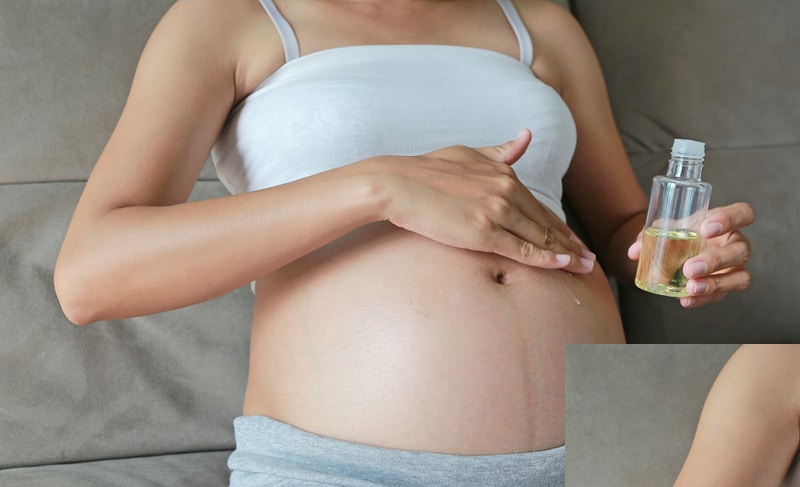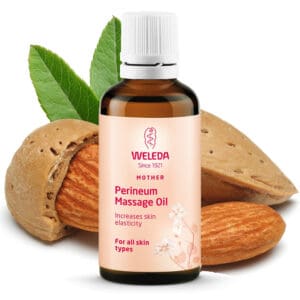The power and role of touch in pregnancy and birth
Laura Bloom
Doula and Pregnancy Yoga Teacher
Summary
Touch is one of our most primal senses and has been described as the primary language of compassion.1 We can communicate deeply with one another through this powerful language and can use it in many ways during pregnancy, birth, and labour.
Whilst touch may not be everybody’s choice during birth and labour, many find it supportive and soothing. This article explores the qualities and benefits of touch during pregnancy, birth and labour and explores how we can integrate our desire for it into our birth plans.
What are the benefits of touch during pregnancy, labour, and birth?
Touch can help to relax the body without over stimulating the mind.2
This is important in birth because the frontal cortex of the brain, the area that is responsible for thinking and concentrating, needs to quieten down to allow the more primitive areas of the brain, the Hypothalamus and Pituitary Gland to focus fully on the functional, primal response that is taking place within the body.3
When the body is relaxed it can function more effectively and the ‘love’ hormone oxytocin can flow which is key to having a calm, gentle birth.3
Considerations when offering touch in pregnancy, labour, and birth.
It is important that touch is offered with sensitivity and compassion and always with the recipient’s consent.
The aim is to use touch in a gentle way to communicate a sense of care and safety for the person receiving it. Although the benefit of touch flows both ways affecting both the person offering and the person receiving the touch.
Speak to the person you are offering touch to and ask them what feels right for them, do they want to receive pressure, stroking, firm hands, soft hands? Do they want you to touch them in a specific area or have spontaneous touch across their entire body? You can keep this simple by asking, does that feel good? Would you like me to continue to do this?
During pregnancy and birth our senses may also feel heightened 4 so being ready to pause or stop if something does not feel good. If a request is made to stop the touch, try not to take this as a personal criticism it is important that the needs of the woman are prioritised, and they have to be able to share comfortably if something no longer feels good.
You can tell a great deal from touching a person as to whether they are carrying tension in their body and where this tension is being held. How do their muscles feel? What is the temperature of their skin? How do they respond to the touch?
It is important to tune in to what you are experiencing in response to giving touch, as you are making contact and paying attention to breathing patterns and this can assist both the birthing person and your own sense of calm and relaxation.
Many methods of touch are very simple and can help to support the journey of pregnancy and labour. Here are some tips on specific areas of the body that may be beneficial to offer touch as a supportive, connective tool.
Feet
Simply placing your hands onto the woman’s feet can have a very grounding effect. This can be done whilst they are stood or sat by adding a steady, gentle pressure downwards onto the sole of the foot.
Foot massage can also be lovely to receive in pregnancy or early labour and can ensure that the blood flow to the feet is stimulated, maintaining warmth and improving circulation to the feet.5
Always ensure that the birthing or pregnant person is sat comfortably, perhaps offer to raise their feet onto a towel or cushion for comfort.
You can use a plant oil 6, such as sweet almond oil and take one foot at a time as you begin by holding the foot with both hands, sweeping gently then adding in strokes across the top of the foot. Ensure that you provide support by holding the foot whilst offering the massage. Using the first two fingers on your other hand start at the inside heel creating small circles along the inside edge of the foot to the big toe and back again. Finishing with a grounding hold on the Achilles can also feel nice and acts as a signal that the massage on that foot has ended.
At this point It can be interesting to compare the two feet. The colour, texture, and temperature of the skin are often drastically different as this massage really helps with circulation. Repeat the massage in a similar style on the other foot.
Light touch massage
This can be offered on the arms or back, neck or legs during pregnancy and labour.
Get yourself into a comfortable possible at the woman’s side. Using the backs of the finger of one hand stroke down the arm from the elbow to the wrist.
Sit or kneel behind the pregnant person and using the backs of the fingers of both hands start at the base of the spine. Stroke the fingers upwards, either side of the spine, across the shoulders and down the outer edge of the back. You can repeat this for a long time with little effort and it can feel very relaxing.
Counter pressure
During pregnancy and labour the bones of the pelvis change position and shape to accommodate your growing baby and to adjust to provide your whole body with appropriate weight baring and balance.7 The pelvis is very cleverly designed to do this however it can cause strong and sometimes painful sensations in the lower back.
A useful way to help alleviate discomfort in the pelvis is by providing counter pressure, using one or both hands to provide strong, steady pressure on the lower back. Some women may enjoy the sensation of this counter pressure during their contractions whilst others may enjoy the pressure in the break between each contraction. The amount of pressure and the placement of the hands should be led and directed by the woman in labour.
Kissing
A quick way to release a whole load of ‘happy hormones’ including oxytocin, dopamine, and Serotonin is by kissing.8 Whilst not all women and birthing people will feel like engaging in a passionate kiss whilst in labour, there are many who have and will. As one of the support roles that is unlikely to be undertaken by your care provider (we don’t recommend suggesting it!) kissing is a very intimate offer of touch that, if requested and desired can help to stimulate exactly the hormones that aid relaxation and primitive bodily functions.
Self touch
Getting to know your body, especially during pregnancy can help you understand what feels good to you and help you connect to the physiological process of pregnancy and birth. Remember that midwives and doulas are very familiar and encouraging of women engaging in self touch that supports their comfort and progresses labour, whilst it can feel strange to consider touching intimate areas of your body such as your breasts, vulva or clitoris in front of others, it is well worth remembering that these forms of touch are not being viewed sexually by your care provider, but rather as stimulants to your labour. You can also always ask for privacy whilst you explore self-touch or intimate touch with a partner during your labour.
Perineum massage – to help gently stretch and soften the tissue between the vagina and anus. (read our full article on perineal massage by following the link below)
Nipple stimulation can help to stimulate labour and to maintain contractions throughout labour if the need arises.9 Stimulating the nipples has an impact on the levels of the hormone oxytocin which both relaxes the birthing person and stimulates the physiological process of the body to begin labour. Masturbation or having an orgasm can feel good in early labour and help your body to produce even more oxytocin and dopamine.
Once baby is born.
You may have heard the term skin to skin. This is when the baby is immediately placed on the mother or fathers naked chest, tummy, breasts, or side. There are so many benefits to this moment of touching including helping to regulate baby’s heartbeat and temperature, facilitating the bonding process between mother and baby and beyond into the development of the child.10
When we receive compassionate touch as mothers during our pregnancy and childbirth, we can then more easily pass this language onto our babies. Learning how they as individuals like to be touched and held and what kind of touch soothes them is part of the beauty of bonding with our babies.
Touch is our first language, babies spend a long time in connection with us and our heartbeat inside of the womb, it’s only natural they want to be comforted by the same familiar body sensations, sounds and warmth.
It can take a little bit of practise to discover what feel goods and how to explore touching in a comfortable and intuitive way during pregnancy and birth but knowing that through this incredible sense there are benefits, not only to a woman’s wellbeing and health but also to her physiological needs to support and ease her birth can be inspirational to you in your birth planning and early parenting.
Links to resources
 Video
Video
The Best Massage Technique for Labour www.youtube.com/watch?v=wF_x68U7078&ab_channel=TheHypnobirthingMidwife
 Websites
Websites
Massage in Labour- www.babycentre.co.uk/a544485/massage-in-labour
References
1: Dacher Keltner: Hands on Research: The Science of Touch: Greater Good Magazine Online – Science Based Insights for a Meaningful Life: www.greatergood.berkeley.edu/article/item/hands_on_research September 2010: Accessed December 2020
2: Hossam A. Shaltout PhD. Time, Touch, and Compassion: Effects on Autonomic Nervous System and Well-Being: Science Direct: June 2012: www.sciencedirect.com/science/article/abs/pii/S1550830712000377 Accessed December 2020
3: Universal Needs of Women in Labour. www.pregnancyparenting.org.au/birth/universal-needs-women-labour-0 Accessed December 2020
4: Awakening the Senses: Pregnancy Body Changes. Ann Douglas. Having a Baby.com www.having-a-baby.com/awakening-the-senses-pregnancy Accessed December 2020
5: Massage in Labour. Baby Centre Advisory Board Approved https://www.babycentre.co.uk/a544485/massage-in-labour Accessed December 2020
6: The use of essential oils and massage to help with your Labour. NHS England Patient Information Sheet https://www.gwh.nhs.uk/media/343993/The-use-od-essential-oils-and-massage-to-help-with-your-labour.pdf Accessed December 2020
7: Saori Morino. Pelvic alignment changes during the perinatal period. Plos One publication, 2019. https://www.ncbi.nlm.nih.gov/pmc/articles/PMC6799872/# Accessed December 2020
8: Why do we Kiss? www.healthline.com/health/why-do-we-kiss#romance Accessed December 20209: Kaori Takahata. Effects of breast stimulation for spontaneous onset of labor on salivary oxytocin levels in low-risk pregnant women: A feasibility study. Plos One publication 2018 https://www.ncbi.nlm.nih.gov/pmc/articles/PMC5813971/ Accessed December 2020
10: UNICEF Skin to Skin Contact. Baby Friendly Initiative Standards www.unicef.org.uk/babyfriendly/baby-friendly-resources/implementing-standards-resources/skin-to-skin-contact/ Accessed December 2020









